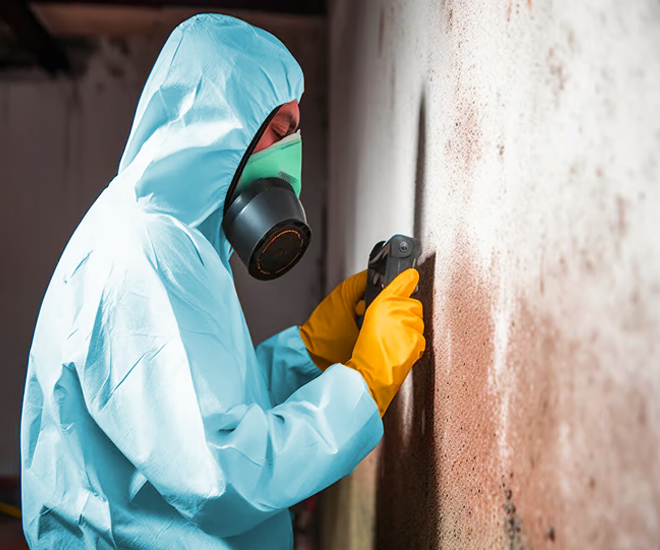Accessing Regional Post Remediation Mold Testing Near Me
Wiki Article
Professional Tips for Blog Post Mold Removal Success
In the world of mold and mildew removal, effectively eradicating mold is just half the fight; the true difficulty lies in stopping its reappearance. By adhering to experienced pointers and best practices, individuals can guard their spaces against mold and mildew revival and keep a healthy indoor setting.
Monitor Humidity Degrees Consistently
After completing mold and mildew removal treatments, keeping optimum humidity levels is crucial to protect against mold re-growth and make sure a healthy and balanced interior atmosphere. High humidity degrees over 60% create a conducive atmosphere for mold to thrive, making routine keeping an eye on a proactive action to prevent any kind of future mold problems.Using hygrometers or wetness meters can aid in properly measuring moisture levels in different locations of the building. These devices supply real-time data that allows remediation professionals to make informed decisions concerning air flow, dehumidification, and various other necessary activities to keep excellent humidity levels post-remediation. Furthermore, developing a regular timetable for humidity checks, particularly in risky locations such as restrooms, cellars, and kitchen areas, is a proactive technique to mold avoidance. By regularly keeping track of moisture degrees, residential property proprietors can effectively mitigate the threat of mold and mildew reoccurrence and preserve a healthy interior setting post-remediation.
Conduct Thorough Inspections Post-Remediation
Following the completion of mold removal treatments, it is essential to conduct detailed inspections to confirm the effectiveness of the removal procedure. These post-remediation examinations are crucial in ensuring that the mold problem has been successfully attended to and that there is no reappearance or staying mold growth. Assessments must be executed by qualified specialists who have expertise in determining mold and mildew and evaluating indoor air high quality.During these assessments, numerous methods such as visual analyses, air tasting, and surface area sampling might be employed to thoroughly examine the remediated locations. Aesthetic analyses include an in-depth inspection of the premises to check for any kind of visible indicators of mold and mildew growth or water damages. Air tasting assists in determining the air-borne mold and mildew spore levels, while surface tasting can spot mold bits on surfaces.
Implement Appropriate Air Flow Techniques
After guaranteeing the efficiency of the mold and mildew removal process through extensive evaluations, the next essential action is to focus on carrying out correct air flow strategies. Sufficient ventilation is vital in protecting against mold and mildew reoccurrence by controlling moisture degrees and advertising air flow.
Proper air flow not just aids in preventing mold growth yet also contributes to the general wellness and comfort of owners. By making sure appropriate air flow throughout the residential or commercial property, you can minimize the threat of mold regrowth and create a healthier living atmosphere.

Use Mold-Resistant Materials for Services
To improve the long-lasting performance of mold and mildew remediation initiatives, integrating mold-resistant materials for repairs is vital in minimizing the threat of future mold development. Mold-resistant materials are designed to stand up to wetness and prevent mold and mildew growth, making them an important choice for locations prone to wetness and humidity. When fixing locations influenced by mold, utilizing materials such as mold-resistant drywall, mold-resistant paints, and mold-resistant caulking can assist prevent mold and mildew recurrence.Mold-resistant drywall is an outstanding alternative to conventional drywall in locations like shower rooms and cellars where dampness levels are higher. When exposed to damp conditions, this kind of drywall has an unique covering that resists mold and mildew development even. Furthermore, making use of mold-resistant paints having antimicrobial representatives can further inhibit mold and you can try here mildew development on ceilings and wall surfaces.
In locations where dampness prevails, such as shower rooms and cooking areas, making use of mold-resistant caulking around sinks, bathtubs, and home windows can help secure out water and prevent mold from holding in splits and crevices. By buying these mold-resistant materials throughout fixings post-remediation, you can considerably decrease the likelihood of future mold and mildew problems and keep a much healthier indoor setting.
Maintain Tidiness and Address Water Issues
After mold remediation, it is crucial to keep a clean environment to prevent the regrowth of mold. Leakages, water invasion, or high moisture degrees can develop the ideal breeding ground for mold, so it is critical to fix any type of water-related troubles promptly.To keep tidiness, take into consideration making page use of HEPA filters in vacuums and air purifiers to catch mold spores and avoid their flow airborne. Guaranteeing appropriate air flow in areas susceptible to moisture build-up, such as kitchens and bathrooms, can help keep humidity levels in check. By remaining attentive regarding tidiness and resolving water problems quickly, you can successfully protect against mold and mildew reinfestation and maintain a healthy and balanced interior setting.
Verdict

In the realm of mold removal, efficiently eradicating mold is just half the fight; the real challenge lies in preventing its reappearance. After finishing mold removal procedures, keeping ideal moisture levels is critical to protect against mold and mildew re-growth and make certain a healthy interior setting. High humidity degrees over 60% develop a helpful setting for mold and mildew to thrive, making regular checking an aggressive measure to prevent any future mold problems.
To enhance the long-term effectiveness of mold remediation initiatives, including mold-resistant products for fixings is crucial in reducing the danger of future mold growth. After mold removal, it is critical to keep a tidy atmosphere to avoid the regrowth of mold.
Report this wiki page